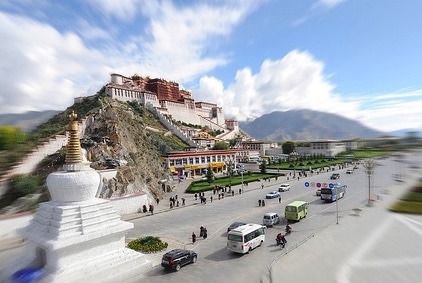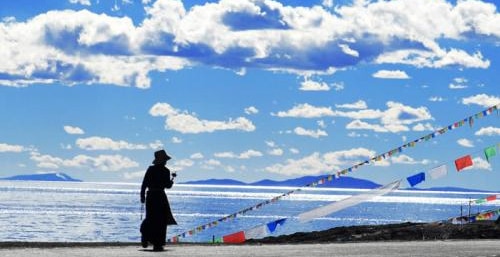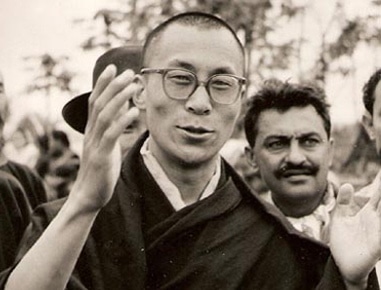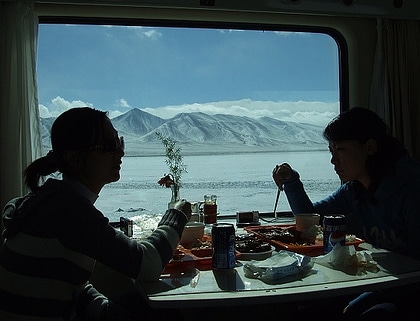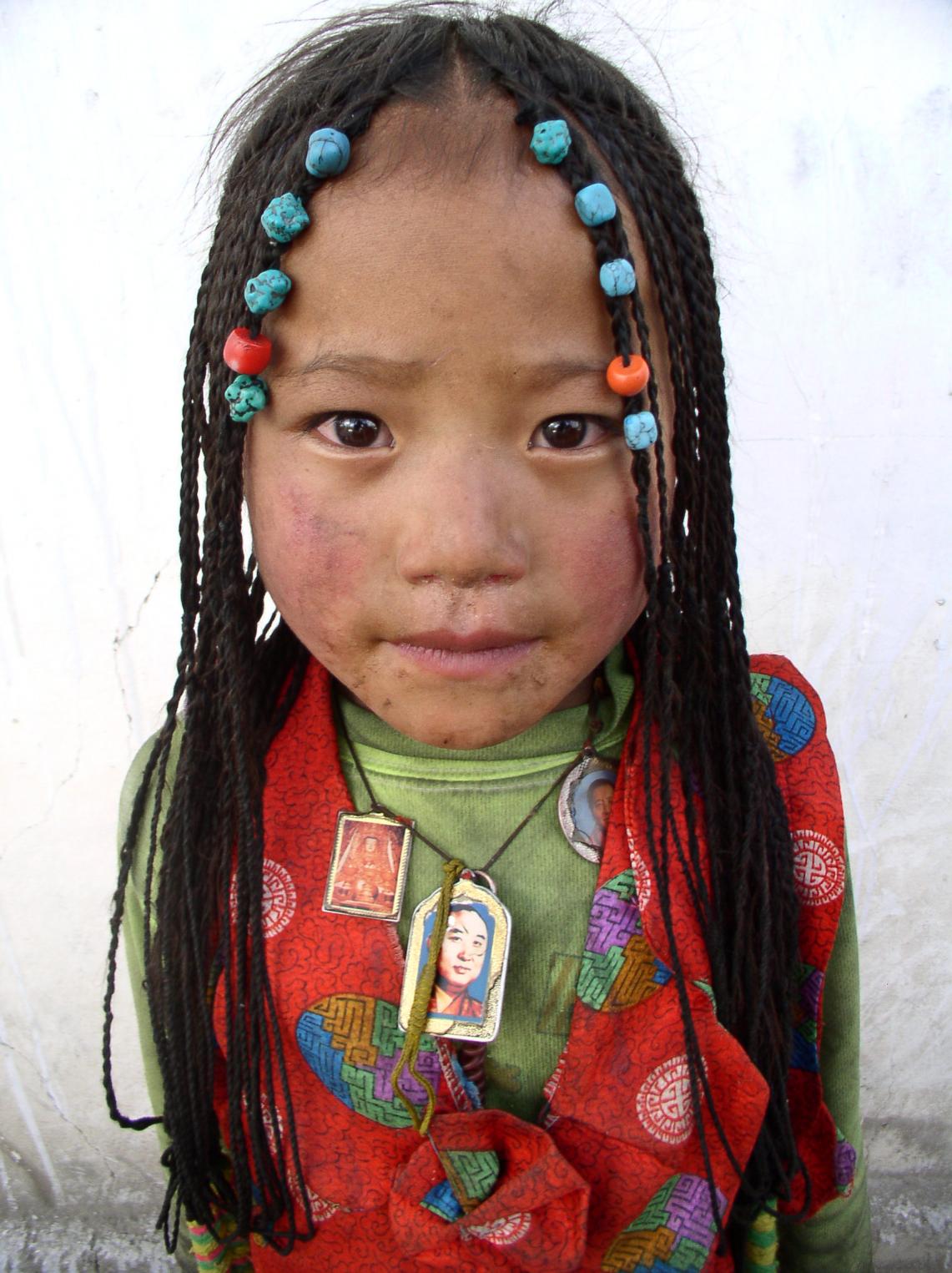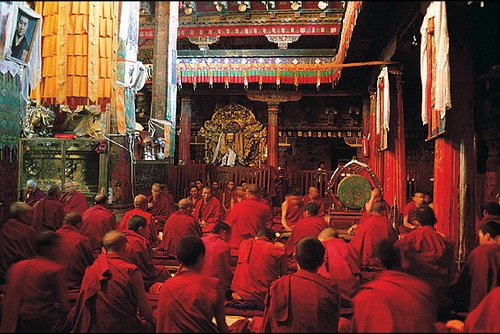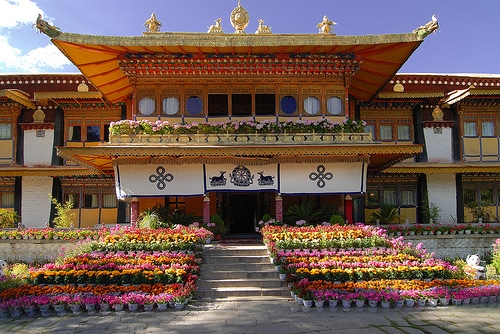The spiritual allure of Lhasa, China (Tibet) has always had a magnetic pull over travelers as one of the world’s great travel adventures since opening for tourism in the 1980s. From adventure-seeking backpackers to luxury jet-setters, travelers everywhere have added the fabled “Roof of the World,” and the capital city of Lhasa, on their places-to-see-before-I-die Bucket Lists.
Either way, you’ll no doubt agree that Tibet’s majestic mountain vistas—combined with the beauty of the Tibetan people and their Buddhist practices—will cast a sublimely hypnotic spell on you that will linger for a lifetime.
The administrative capital of the Tibet Autonomous Region (TAR) and the only sizeable city of the region, Lhasa is your base for exploring the rest of the Tibet. Lhasa (“Ground of the Gods”) is the center of Tibetan Buddhism with plenty of sights in and around to keep you engrossed for at least a week.
But don’t expect to find a mystical Shangri-la. The city hasn’t been immune to the “charms” of Chinese urban development. Many visitors are surprised by the traffic congestion and modern (i.e. ugly) concrete buildings that surround traditional Tibetan homes and monasteries. They’re even more taken back by the heavy Chinese military and civilian presence (it’s estimated that Han Chinese now outnumber Tibetans).
While the erosion of traditional Tibetan culture may leave some depressed, it doesn’t mean you should avoid visiting. Many Tibetans—including the Dalai Lama himself—encourage as many people to visit in order to learn firsthand about Tibet culture and its gentle people.
And while you may have to trek a considerable distance to add Lhasa, Tibet to your itinerary, can you really live with the regret of missing out on one of the planet’s most unique and unforgettable adventures?
More Info & History
Tibet is considered one of most isolated parts on the planet. The colossal Tibetan Plateau – which lies at an average height of 16,000 feet (4,900m) above sea level—is guarded on all sides by immense mountain ranges.
Almost everyone knows at least the broad strokes of recent history of Tibet. The independence movement has been popularized by celebrities from Richard Gere to the Beastie Boys to Lindsay Lohan (like she doesn’t have enough to worry about).
Needless to say, the government has their own version of events but here’s my vastly oversimplified summary: Over the span of many centuries, Tibet existed both as its own separate sovereign area as well as marginal “vassal” under Chinese rule, depending on who was in power at the time (and also the Chinese didn’t obsess about defining borders on maps until relatively recently in history). Being so isolated and inaccessible—and without much resource value—Chinese emperors had bigger fish to fry and so really didn’t care what happened way over in Tibet.
In 1913, the 13th Dalai Lama declared independence from China and basically kicked them out of town. For the next 36 years, Tibet enjoyed de facto independence while China was busy with other things (like the Warlord era, WWII and a bloody civil war).
There was back and forth tension from time to time until after the Communists took over as top dog. In 1950, Commies troops started invading parts of Tibet and sparks began to fly. By 1959, all was lost for Tibet and the 14th Dalai Lama and many Tibetans fled to India to set up the Government of Tibet in Exile. Since then it’s pretty much been a stalemate, although the DL in 2006 clarified that, “Tibet wants autonomy, not independence.”
Travel Practicalities
The best time to visit Lhasa and Tibet is from about April/May to October. But be advised that during the rainy season (roughly around July/August), travel can be tougher because of blocked roads and swollen rivers. And don’t forget that temperatures in these higher elevations can drop down dramatically at night, so pack some warmer clothes.
Because of the risk of altitude sickness (also known as acute mountain sickness or AMS ), I’d recommend taking a train to Lhasa rather than flying unless you’re pressed for time. Although Lhasa is at a relatively low altitude (3490 meters or 11450 ft) compared to the rest of Tibet, it’s still a big jump by airplane. If you do decide to fly, drink lots of water (no alcohol), stay in Lhasa at least a couple of days to acclimate, and don’t exert yourself too much (even walking at high-altitudes can stress your oxygen-deprived body to the AMS tipping point).
Be forewarned though: Traveling to Lhasa by train can be slow-going. From Chengdu to Lhasa (3360 km), my train took some 44 hours (one of the few times I sprung for the most comfortable soft-sleeper class ticket). From my research though, there are trains that can make the trip from Beijing (4064kms, much farther away than Chengdu) in about the same time. I probably took a much slower train (we did seem to make a lot of station stops); there are likely different express/hi-speed trains, though I’d imagine you’ll pay more for the luxury.
You also need to buy a permit to travel to Tibet as a foreigner before you enter the TAR area. Technically, that means that you’re supposed to be part of a “group” (they especially like groups since they spend more and are easier to manage compared to pesky independent travelers).
Depending on the whims of the government (and political situation), you might be able to travel solo in Lhasa (but will still need to apply for your Tibet travel permit before arriving). If you’re only visiting Lhasa, you might be able get away with only buying a permit and train/air ticket. These days, foreigners are free to move around Lhasa without being accompanied by a tour guide.
To go the solo route, your best bet is to try to buy an air or train “package” from a hostel or travel agency in Chengdu (or even Xi’an, Xining or possibly Beijing). Of course, they’ll try to sell you on the full-service tour package, which includes a tour guide every step of the way. But note that if you want to travel outside of Lhasa (including a couple of surrounding tourist spots) you’ll need additional travel permits and most likely, need to go with a tour guide (usually with a Toyota 4-Runner & driver).
I’m sure there are plenty of good (Tibetan) tour guides, but here’s a young guy who took me around during my last trip that I recommend:
Top Things To Do
- Built on Lhasa’s highest point on Marpo Hill, the Potala Palace was the fortress palace of the Dalai Lamas and is the city’s most recognizable landmark. Today, the 13-story high monument with over 1,000 rooms is now essentially a museum, though an impressive one at that.
- Founded more than 1300 years ago, the Jokhang Temple is Tibet’s holiest temple and spiritual heart of city.
- Watch Tibetan Buddhists walking clockwise around the pilgrimage circuit from dawn until dusk in the Barkhor, the city’s busiest and most fascinating neighborhood, which has managed to preserve its unique, medieval character.
- Located about 4 miles (7km) west of the city center is the Dalai Lama’s summer residence, the Norbulingka (precious Stone Garden), which was built in 18th century.

